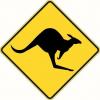I'll throw in my two cents worth. I use a power strop for sharpening carving tools, and I feel I'm pretty capable with a power strop. Have done it for years.
But no matter how I try, if I use my power strop on chisels and plane blades, I dub the edge. I find I get a much better edge straight off my water stones with chisels and plane blades.
And I've really tried a number of times to use the power strop on those tools.
I can only guess the reason but I think it has to do with the bevel angle. Carving tools use a very low bevel angle, and even if I sharpened them by hand, I'd get some rounding of the bevel because you just can't hold the tool that flat.
I use a jig with my chisels and plane blades so the angle I set it to is the angle I get. I suppose I could try really reducing the bevel angle of a chisel and see how the power strop finished the edge. My guess is that it would dub the edge somewhat, producing the equivalent of a secondary bevel, but the net effect would be a bevel of 25 to 30 degrees, which would work. I'll have to try that one day.
Mike
Go into the world and do well. But more importantly, go into the world and do good.





 Reply With Quote
Reply With Quote



